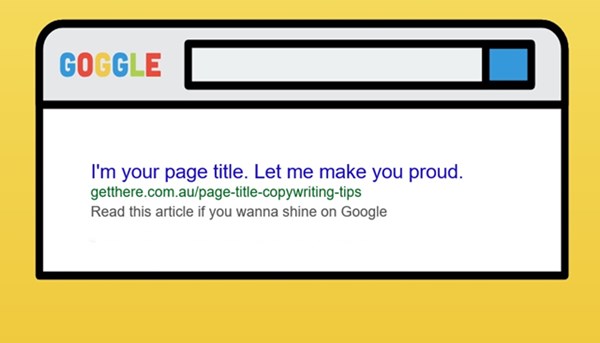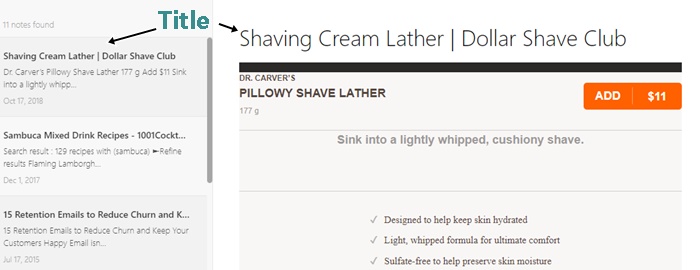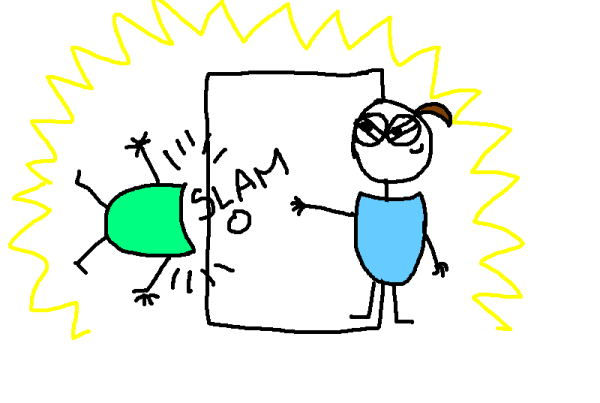SEO page titles (a.k.a title tags or meta titles) are the Jan Brady of the SEO copywriting family.
No matter how hard they try, they rarely enjoy the praise and attention lavished upon their copy siblings – especially the vivacious headline.

However, it’s important to spend quality time with the most neglected child in your web copy clan.
Otherwise, even your most captivating sales pages and blog posts could being going to waste.
But isn’t the title the headline?
No, they’re different things. Sometimes they look the same, but we’ll get to that in a moment.
Unlike headlines, titles don’t appear on the page. They only sit in the HTML code between title tags, like this:
<title> Manly Surf School: Sydney Surf School </title>
Then they show up in Google search results like this:

The good news is that you don’t need to know any html coding to add a title.
Most content management systems (CMS) include a box for you to type your title straight into.
What’s so special about SEO page titles?
A well-crafted title can help boost your Google ranking and search traffic. A bad title can sink both.
Why? Because:
- titles influence searchers and search results
- the more relevant and helpful your page is, the higher it will rank
- searchers are more likely to click a title that’s related to their search request.
- searchers quickly overlook irrelevant or ambiguous page titles.
For example, the title on the Grooming Lounge website page below is:
<title>Men’s Shaving Creams | Facial & Head Shaving Creams</title>
And it appears like that in Google:

But the headline that you see on the page is ‘Shaving Creams & Soaps’.
(In the html code it looks like <h1>Shaving Creams & Soaps</h1>)
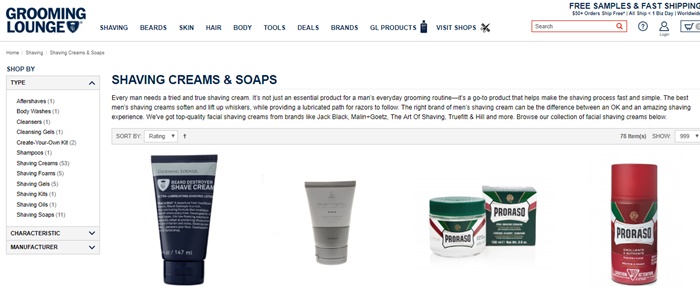
To boost their ranking, Grooming Lounge didn’t just repeat the headline in the title – they added more keywords so the page would appear for more search requests. They also indicated who the audience was – men.
There’s another reason you should create meaningful, keyword-rich titles.
When someone adds a web page to their Favourites, Evernote, etc it’s the title they see when they come back days, weeks, even months later. You want to be certain the words they see make sense to them.
On this page the title reads <title>Shaving Cream Lather | Dollar Shave Club </title>
The headline may not have been as clear <h1> Pillowy Shave Lather </h1>
Some headlines double as SEO page titles
In many content management systems, the headline of the page or article will default as the meta title. In some cases that works a treat.
For example, a blog post headline like the one below is also a good title.

But not always. In the shaving examples we looked at, the titles were better optimised for keywords and search requests than the headlines.
The first job of a page title is to quickly and concisely tell search engines and people what to expect from a web page.
Of course, you need keywords in your headlines too.
But headlines have more to do. They need to capture attention AND make people curious enough to invest time in reading on.
In the example below, Macquarie Bank used a different title and headline. The title is more specific and focuses on search terms ‘Save for house deposit’, ‘House deposit tips’, etc.
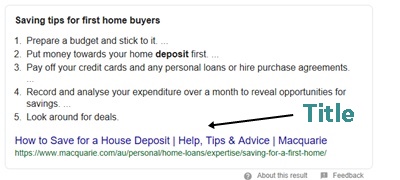
The headline contains keywords closely related to these words and phrases, but focuses on an audience aspiration – your first home.

7 SEO page title tactics to lift your rank and clicks
Page titles are one cog in a giant SEO wheel.
If you already use the right keywords in the right places elsewhere, you may not see a huge ranking jump from a single title tweak.
However, every little bit helps. And these good SEO title practices can be the difference between a click and a cold shoulder.
1. Use your 65 characters wisely
Keep your title close to this length.
Anything longer might not get shown in the search results. Anything much shorter is a waste of free Google advertising space. That is, unless you’re promoting a well known brand or product (more on this soon).
For many years, the recommended title length was 55 – 60 characters. Last year, Google threw in some bonus pixels to give us an extra 5 – 10 characters to work with.
The character length is roughly the same on desktop, laptop and mobile.
2. Place your main keyword near the front
SEO titles need to make sense and be an easy read. At the same time, there are advantages in placing your keyword at, or near, the start of your title. If you can manage to do both, props to you.
Here’s why it helps.
Many searchers only see the first few words
Our search habits have changed with mobile use. A few years ago, Google announced that more searches were being made on phones than on desktops. Today, it’s not even a fair race.
How does this impact your title? Look at these heat maps from a Bing Ads study by Clickz to see where eyes focus on a mobile search results page.
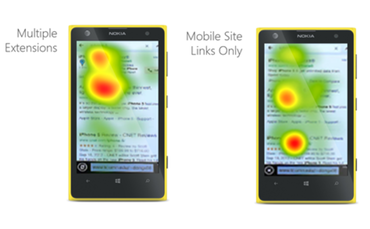
The scrolling nature of mobiles means our eyes have become conditioned to reading down, rather than across the page.
What’s super-fascinating (unless you happen to be 99.9% of my friends and family), is how this new approach to mobile scanning impacts the way we read search results on desktops and laptops.
The heatmap examples below are from tracking studies by Mediative, done a decade apart. They show that we now focus on less words in more titles, and spend 50% less time scanning the page.
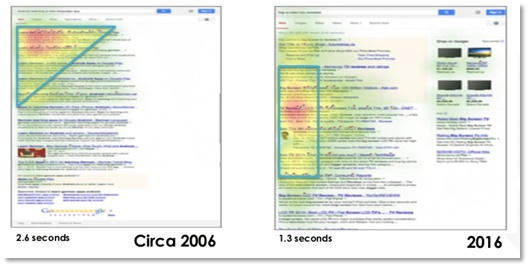
From this information, we can conclude that:
- humans are becoming sloth-lazy.
- if you want to capture attention on any device, place your keywords towards the front.
Keywords first may also help lift your rank
Ranking depends on the SEO strength of an entire page and website.
Saying that, I’ve seen many cases where moving a keyword from the back of a title to the beginning has paid off with a ranking boost.
You can see the power of titles with front-loaded keywords in this search for ‘calcium supplements risks’. The top answers all put the topic at the front of the title.
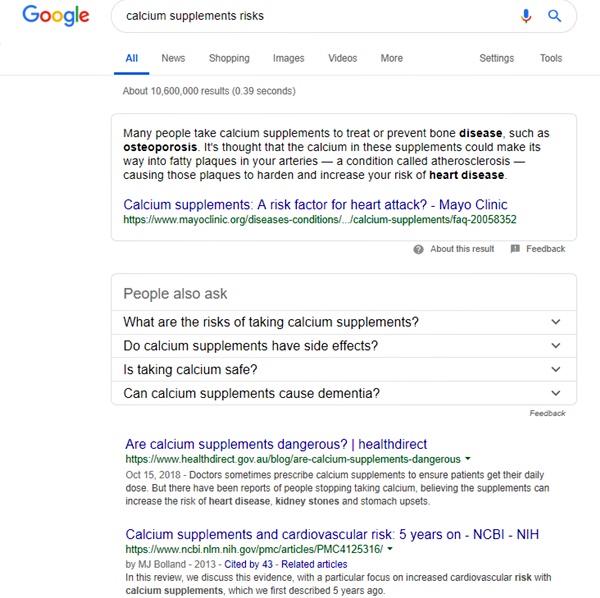
A result further down had ‘calcium supplements’ in the middle of the title and contained too many words. As a result, ‘risks’ (an important word) was cut off.

Another company, Nutrition Facts, placed ‘calcium supplements’ towards the back.
This page might be able to leapfrog a few positions if they changed the title to:
<title>Calcium Supplements – The Risks and Benefits | NutritionFacts.org</title>

Here’s a title formula you can try
SEO bible, Moz, recommend doing something similar with your titles. They use a simple formula of:
Primary Keyword – Secondary Keyword | Brand Name
An example of this for a bike shop <title>Kids Bikes – Children’s Bicycles | WheelRUs</title>
3. Leave no doubt what your page is about
Search engines are pretty clever these days. But they still want the right words in the right places.
If your site is well optimised for SEO you might rank highly for a phrase closely-related to your main page keyword. For example, searching ‘romantic holidays’, the top three pages are:

An exact match is best, a close match good. The thing you want to avoid is confusing people, or leaving your title open to interpretation.
For example, the article below is about career passion. In this case, the headline doubles as the title <title>Why passion is a dirty word – Flying Solo</title>
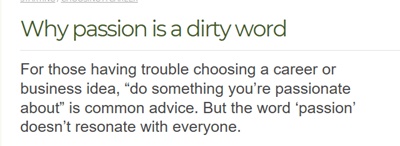
See where this is going? A title or headline like this is not going to rank well for ‘career passion’ or ‘find a job I love’.
Of course, it might pop up in search results for something spicier. Or a few well paid jobs you hadn’t considered.
As it happens, the article itself is well-optimised for the word career, and the site contains a lot of related content. So, it’s unlikely this page will show up in the naughty corner.
To help Google and readers get context, a better title would have been:
<title>Choosing a career – Why passion is a dirty word – Flying Solo</title>
4. Sprinkle in persuasive copy
Keywords can only do so much.
To get more people clicking you need to show them that your page is the one they’ve been hunting for.
A few choice words can make all the difference.
Tell them you’re ready and waiting
Include words such as fast, now, buy, only, hurry, instant and free shipping.
Tell them how new it is
Include words like latest, new, 2019, fresh and introducing.
Tell them how epic it is
Include words like ultimate guide, 101, complete, step-by-step and definitive.
Tell them what great value it is
Include words like save, win, cheap, free, discount, and bonus.
Tell them how helpful and easy it is
Include a number/list, how to, easy way or lazy way.
(Don’t) tell them what they’re missing
Build curiosity by including reason why, will make you (x) or here’s how.
5. Cull the word fat
You’ve got 65 characters to play with. A quarter of a tweet. Decide what really needs to be in your title.
The title below is a default from the page headline.

It’s not a bad headline for this younger audience.
However, we know most people quickly scan the first few words of a title. I’d shorten the title by replacing ‘you can actually’ with ‘to’, and leave the headline as is.
6. Show off your brand name (if you are one)
As a general rule, it’s better to place your business name at the back of the title.
You know, give the people what they want up front – information, keywords, answers that matter.
But what if your business, product or service is also a well-known and trusted brand?
Then you’ll want to shamelessly self-promote your brand or product on relevant titles like a Kardashian’s rear end to an Instagram post.
By highlighting a name that people know and trust you’ll attract more eyeballs and clicks.
When we look for ‘hand cream’ on Google, you can see that Mecca and Sephora use short titles. This highlights and pushes their brand name towards the front.
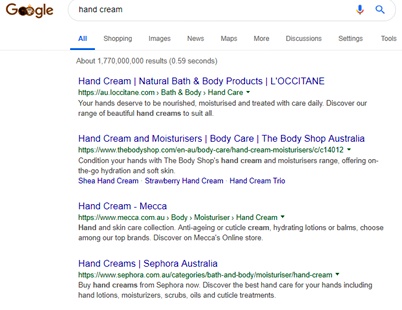
Why do it? Because they know the ladies trust their business as much as their product.
7. Capitalise on Capitals
Using capitals in several words has been shown to lift click-through rates.
But what works for one business, won’t always work for another. You should test different ways to see if it makes a difference to your Click Through Rate (CTR).
Here’s the lowdown.
Title case
![]()
- Catches eyes on a search results page
- Has shown to lift CTR for many businesses
- Works better for more traditional or conservative industries
Sentence case

- Easier to read
- Feels friendlier
Capital case
![]()
![]()
- Eye-catching
- Good for highlighting product names
- Can look a little ‘BONUS FREE STEAK KNIVES!!’, if ya know what I mean
If you like the idea of geeking out on capital letters in titles, you’ll feel right at home in this Moz forum.
And, finally, here’s a bonus set of SEO steak knives for coming this far with me…
![]()
In conclusion, give your SEO page titles a hug
Next time you’re writing a web page or blog post, by all means, pander to your on-page copy kids.
Share your love with your attention-seeking headline, your boisterous scannable subheads, your engaging body copy, dashing keywords, bewitching bullets and captivating call-to-action.
Just remember, there’s a title looking down from the top of your page code, pining for your attention, love and guidance.
It could turn out to be the SEO child who does you proudest.[/vc_column_text][/vc_column][/vc_row]
